Best basketball players from Asia & Oceania
Who are the all-time best basketball players from Asia & Oceania (we include Australia and New Zealand here)? Success on the national, regional, and global levels is a key component of being among the best of the best. All-time best basketball players stay in the collective memory of the public at large. They create lasting memories. In analyzing elite players from this huge stretch of land, three key factors matter most: Overall feats, Historic impact, and Notoriety. Collectively, these traits produced greater recognition of Asia & Oceania hoops worldwide. So who are the key individuals described above? There are dozens who have contributed above the norm. Updated in July 2020, here’s a look at 15 irreplaceable Asian basketball stars (and those from Oceania) spanning decades of basketball:
15. Ha Seung-jin

The Korean big man became the first player from his country to compete in the NBA. It was a landmark achievement that helped him land a spot on a list of the all-time best basketball players from Asia & Oceania. Ha, who stands 7 feet, 3 inches, played sparingly for the Portland Trail Blazers in the 2004-05 and 2005-06 NBA seasons. But Ha enjoyed more success upon return to South Korea, including title-winning campaigns for KCC Jeonju in 2009 and 2011.
14. Yuta Tabuse
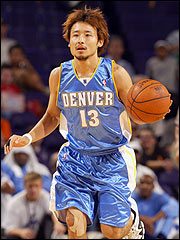 Even though Tabuse had only a four-game stint with the Phoenix Suns in 2004, he remains a beloved Japanese basketball player. He was the nation’s first NBA player. Fast forward to May 2017, Tabuse helped the Tochigi Brex capture the 2017 B. League title in the Japanese basketball league’s inaugural season. This feat increased his lofty credentials in the eyes of fans and media. Indeed, an important figure. Indeed, he is one of the all-time best basketball players from Asia & Oceania.
Even though Tabuse had only a four-game stint with the Phoenix Suns in 2004, he remains a beloved Japanese basketball player. He was the nation’s first NBA player. Fast forward to May 2017, Tabuse helped the Tochigi Brex capture the 2017 B. League title in the Japanese basketball league’s inaugural season. This feat increased his lofty credentials in the eyes of fans and media. Indeed, an important figure. Indeed, he is one of the all-time best basketball players from Asia & Oceania.
13. Yuta Watanabe
In his second season on a two-way contract with the Memphis Grizzlies and Memphis Hustle in 2019-20, Watanabe has continued his development as a dynamic all-around player. Case in point: the Japanese native poured in a career-high 40 points for the Hustle in an NBA G League against the Delaware Blue Coats in January 2020. The left-handed shooting Watanabe is expected to remain a leader on the Japan national team for years to come. The 203-cm Watanabe is a relentless defender and guards players from all positions.
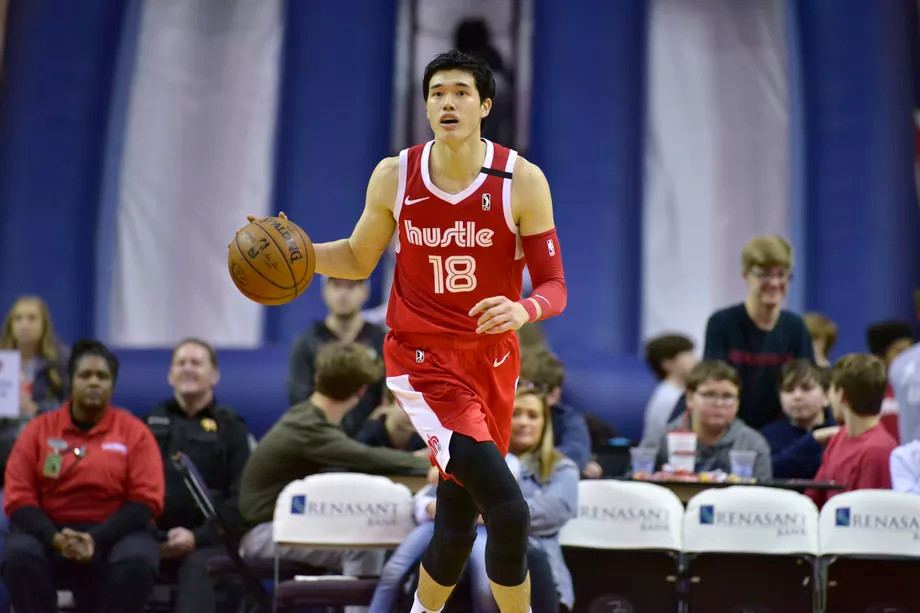
12. Hamed Haddadi
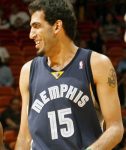 In Iran, near the crossroads of Asia and Europe, the sporting achievements of Middle Eastern athletes resonate with the broader Muslim world. And it’s one important reason why Haddadi’s employment in the NBA (2008-13, Memphis Grizzlies) matters. He also briefly competed for the Phoenix Suns after that. Haddadi’s work raised the bar for talented Iranian players, showing them what was possible. After his NBA career, Hamed Haddadi played in the Chinese league where he was the Finals MVP in 2016, another key feat on his resume.
In Iran, near the crossroads of Asia and Europe, the sporting achievements of Middle Eastern athletes resonate with the broader Muslim world. And it’s one important reason why Haddadi’s employment in the NBA (2008-13, Memphis Grizzlies) matters. He also briefly competed for the Phoenix Suns after that. Haddadi’s work raised the bar for talented Iranian players, showing them what was possible. After his NBA career, Hamed Haddadi played in the Chinese league where he was the Finals MVP in 2016, another key feat on his resume.
11. Ding Yanyuhang
Despite battling knee and foot injuries over the past couple of years and being forced to rest, the Shandong Golden Stars veteran remains one of the elite scorers in China. Ding put 26.0 points on the board in 2016-17, followed by an impressive 28.2 the next season. He was named the Chinese Basketball Association’s domestic MVP in both years. The versatile small forward/shooting guard was scheduled to play for the Dallas Mavericks in the NBA Summer League in 2017 but missed out due to injuries. If he can recover from injuries in 2020 and beyond, Ding will certainly climb up the list of the best all-time players from Asia & Oceania.
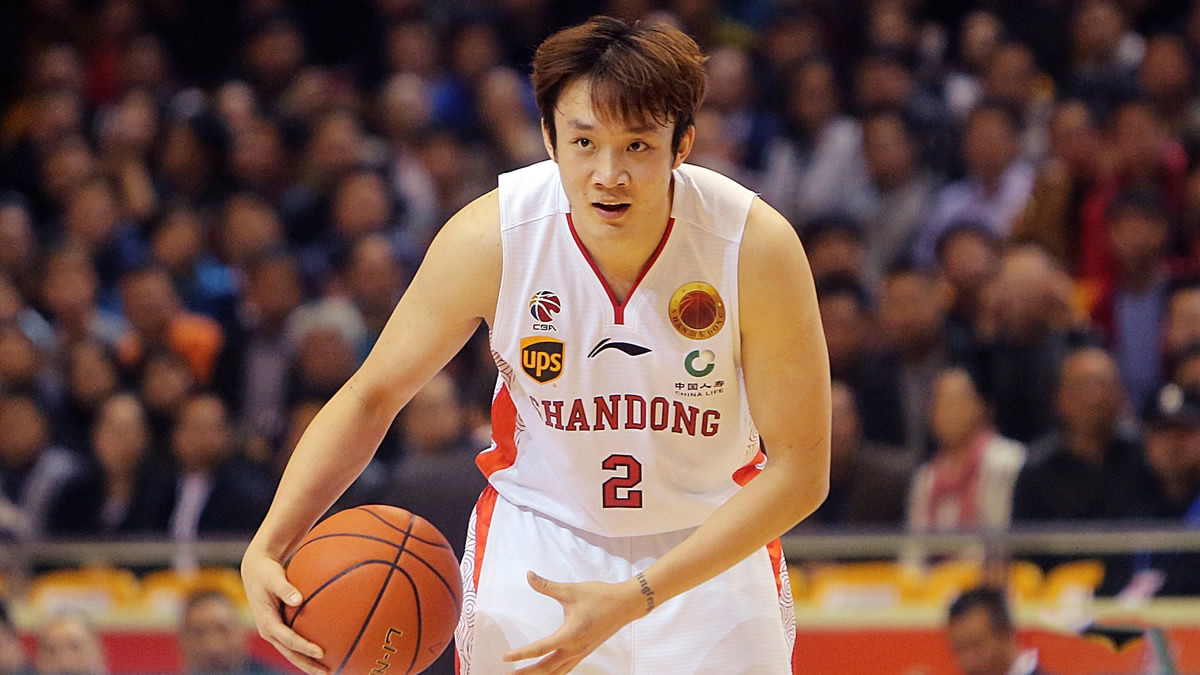
10. Steven Adams
From New Zealand, Adams possesses bragging rights as the first Kiwi to be picked in the first round of the NBA draft. This happened in 2013 when the Oklahoma City Thunder grabbed the 7-foot University of Pittsburgh standout with the No. 12 pick. Adams is an OKC mainstay. Starting 80 games last season, Adams had career-high totals in points, rebounds, assists, and steals.
He’s set the benchmark for aspiring NBA players from New Zealand. Steven Adams’ family also continues to be a matter of public intrigue. His father had 18 children with five women. Among his siblings is four-time Olympian shot putter Valerie Adams, a gold medalist in Beijing in 2008 and London four years later. She took home the silver from Rio de Janeiro in 2016. Indeed, Steven Adams’ sister is one of New Zealand’s all-time greatest athletes as well.
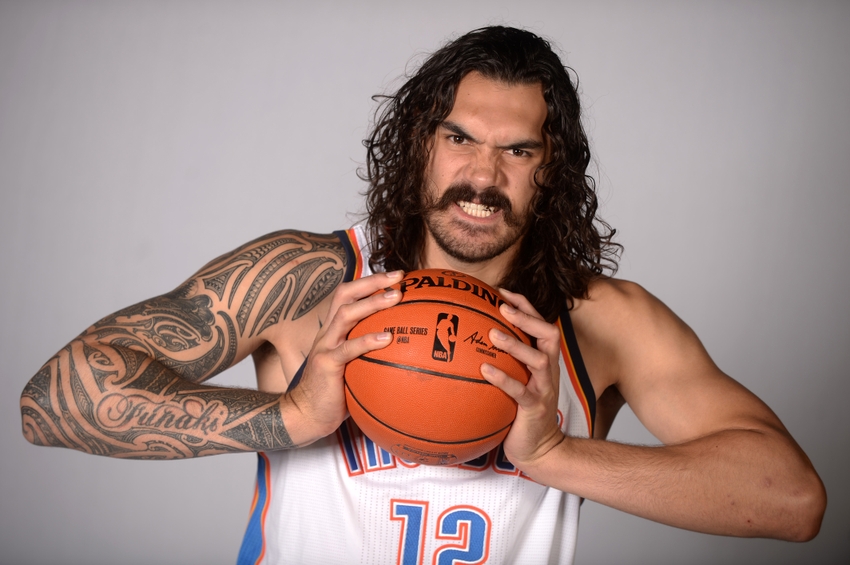
9. Rui Hachimura
The first Japanese selected in the first round of the NBA Draft in 2019, Hachimura has raised expectations and energized the hoop scene in his homeland. The Washington Wizards’ ninth overall pick contributed 13.4 points and 6.0 rebounds per game before the NBA suspended the 2019-20 season due to the COVID-19 pandemic. One of the all-time best players from Asia & Oceania, Hachimura won the Julius Erving Award as the NCAA’s best small forward during the 2018-19 college season. What’s more, the high-flying forward helped carry Gonzaga University to the 2018 Maui Invitational title.
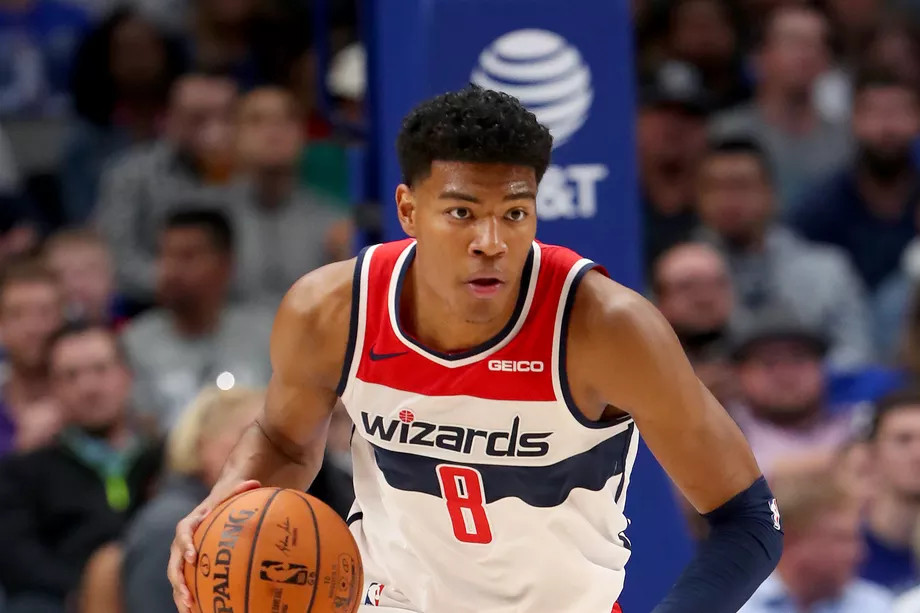
8. Yi Jianlian
The Chinese veteran forward has solidified his reputation as one of the all-time best players from Asia & Oceania since rejoining the Guangdong Southern Tigers in 2012. Yi has averaged 20-plus points per game ever since then. A four-time CBA regular-season domestic MVP (2013-16), he competed in the NBA from 2007-12 with the Milwaukee Bucks, New Jersey Nets, Washington Wizards, and Dallas Mavericks, averaging 7.9 points and 4.9 rebounds. A first-round pick of the Bucks in 2007, Yi has won five Chinese league titles in his distinguished career, including 2019.
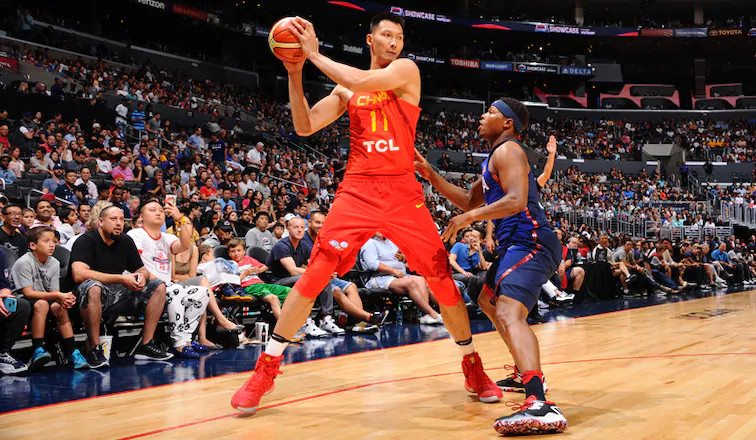
7. Fadi El Khatib
For two decades, the Lebanese small forward has lit up scoreboards in his homeland and overseas. He’s been a key star on great teams in the domestic league, too. During the 2017 FIBA Asia Cup, El Khatib, now 37, dropped 33 points, pulled down 11 rebounds, and handed out eight assists against New Zealand. It was a bold reminder of his overall abilities and importance for Lebanese basketball.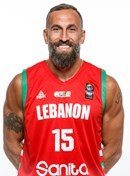 Early in his pro career, El Khatib helped lead Sagesse Beirut to seven consecutive Lebanese League titles (1998-2004). Remarkable. He led the Lebanese Basketball league with 29.6 points a game in the 2009-10 season, suiting up for Champville SC (his current team; the third tour of duty with Champville). Years after his initial success, El Khatib would prove his worth once again. In 2011, his new team, Sporting Al Riyadi Beirut, captured the FIBA Asia Champions Cup. He’s plied his craft in China and Ukraine and played a key role on Lebanon’s 2002, 2006, and 2010 FIBA World Championship squads. He showed the world that he’s an accomplished scorer in ’06 in Japan, with 18.8 per game, the eighth-highest total. (Yao Ming finished first overall at 25.3. Future Hall of Famers Dirk Nowitzki and Pau Gasol were second and third.) . Both rank among the best European basketball players of all time.
Early in his pro career, El Khatib helped lead Sagesse Beirut to seven consecutive Lebanese League titles (1998-2004). Remarkable. He led the Lebanese Basketball league with 29.6 points a game in the 2009-10 season, suiting up for Champville SC (his current team; the third tour of duty with Champville). Years after his initial success, El Khatib would prove his worth once again. In 2011, his new team, Sporting Al Riyadi Beirut, captured the FIBA Asia Champions Cup. He’s plied his craft in China and Ukraine and played a key role on Lebanon’s 2002, 2006, and 2010 FIBA World Championship squads. He showed the world that he’s an accomplished scorer in ’06 in Japan, with 18.8 per game, the eighth-highest total. (Yao Ming finished first overall at 25.3. Future Hall of Famers Dirk Nowitzki and Pau Gasol were second and third.) . Both rank among the best European basketball players of all time.
6. Satnam Singh Bhamara
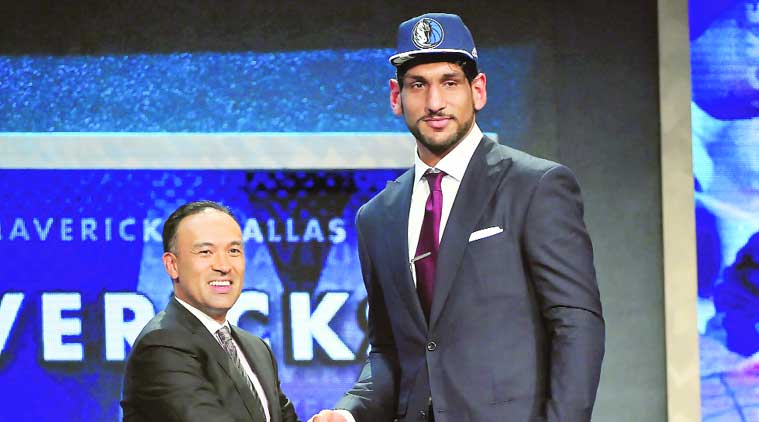 With a population of 1.34 billion people, India represents a huge market for potential NBA players. The Dallas Mavericks grabbed Satnam Singh Bhamara, a 7-foot-2 center with the 52nd pick in the 2015 draft. He’s a work in progress. Bhamara has toiled in the NBA Development League (now known as the NBA G League) for the Texas Legends the past two seasons, with averages of 1.6 points and 1.4 rebounds in 27 games. The NBA Summer League may be his proving ground in the next few years. Indeed, the Indian basketball player is a project for the Mavericks franchise.
With a population of 1.34 billion people, India represents a huge market for potential NBA players. The Dallas Mavericks grabbed Satnam Singh Bhamara, a 7-foot-2 center with the 52nd pick in the 2015 draft. He’s a work in progress. Bhamara has toiled in the NBA Development League (now known as the NBA G League) for the Texas Legends the past two seasons, with averages of 1.6 points and 1.4 rebounds in 27 games. The NBA Summer League may be his proving ground in the next few years. Indeed, the Indian basketball player is a project for the Mavericks franchise.
He’s also a role model for millions in India. They dream of seeing the Indian NBA player thrive at the next level some day. He’s, literally, one in a billion. Singh is King. And he knows it. An inspiration to all Indian basketball players and also to his teammates of the national Indian basketball team. He’s ascended to cinematic fame early in life, too. Netflix purchased streaming rights to “One in a Billion,” a basketball documentary about Bhamara’s humble roots, growing up in a farming village (Ballo Ke) in Punjab, India. In the film, the Indian basketball player reminds the audience that he’s defied the odds, but refuses to discard the past. “Don’t forget where you came from,” he said.
He’s ascended to cinematic fame early in life, too. Netflix purchased streaming rights to “One in a Billion,” a basketball documentary about Bhamara’s humble roots, growing up in a farming village (Ballo Ke) in Punjab, India. In the film, the Indian basketball player reminds the audience that he’s defied the odds, but refuses to discard the past. “Don’t forget where you came from,” he said. Captured by a camera, the then-high school senior is also seen honing his skills at IMG Academy in Florida. It continues by following his unlikely journey to the 2015 NBA Draft, showing him working out and training before the draft. The basketball documentary made its Netflix debut on Dec. 6, 2016, to a global audience. Adding gravitas to the 69-minute documentary were appearances by NBA commissioner Adam Silver, Mavericks owner Mark Cuban and Sacramento Kings owner Vivek Ranadive (born in Mumbai, India).
5 Andrew Gaze
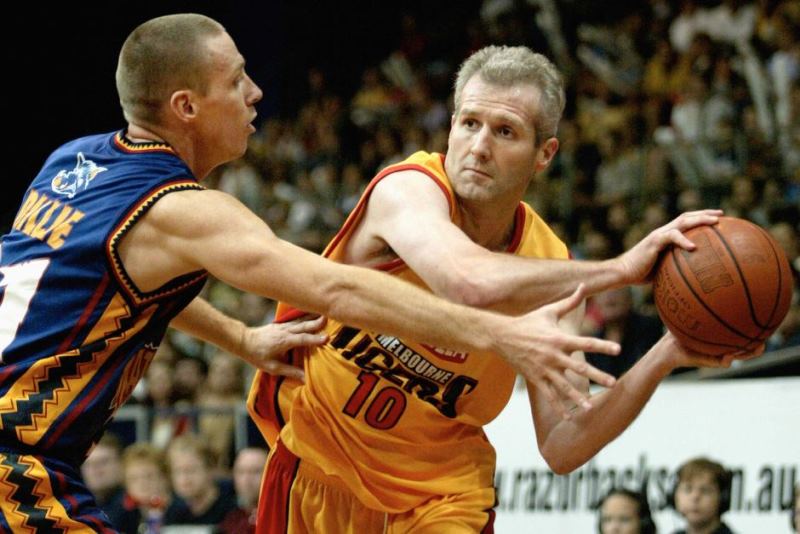 A FIBA Hall of Fame inductee in 2013, Gaze wracked up seven National Basketball League honors during his distinguished career Down Under. The splendid shooting guard dropped 60 points on the Newcastle Falcons in 1987, when he averaged a jaw-dropping 44.1 points in the 20-game campaign for the Melbourne Tigers in Australia. From 1988-89, Gaze played for NCAA Division I squad Seton Hall, helping the Pirates finish as the title runner-up in the NCAA Tournament. Though his career was primarily spent in Australia, Gaze gained greater attention from his homeland’s fans playing sparingly for the Washington Bullets and the champion Spurs in 1998-99, then returned to Melbourne. Gaze also starred for teams in Italy and Greece, expanding opportunities for aspiring Aussies in the years to come.
A FIBA Hall of Fame inductee in 2013, Gaze wracked up seven National Basketball League honors during his distinguished career Down Under. The splendid shooting guard dropped 60 points on the Newcastle Falcons in 1987, when he averaged a jaw-dropping 44.1 points in the 20-game campaign for the Melbourne Tigers in Australia. From 1988-89, Gaze played for NCAA Division I squad Seton Hall, helping the Pirates finish as the title runner-up in the NCAA Tournament. Though his career was primarily spent in Australia, Gaze gained greater attention from his homeland’s fans playing sparingly for the Washington Bullets and the champion Spurs in 1998-99, then returned to Melbourne. Gaze also starred for teams in Italy and Greece, expanding opportunities for aspiring Aussies in the years to come.
4. Carlos “Caloy” Loyzaga
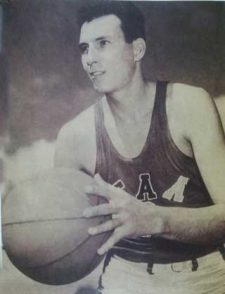 Filipinos’ love for basketball proved contagious during Loyzaga’s exceptional career. Known as “The Big Difference,” he helped the national Philippine basketball team thrive across the continent in major competitions, including four Asian Games golds (1951, ’54, ’58, and ’62) in as many tourneys. The Philippine basketball team also claimed FIBA Asia Championship titles in 1960 and ’63 with Loyzaga at the pivot. Carlos “Caloy” Loyzaga was the clear-cut chairman of the Philippine legends as a star in the middle. A 6-3 center (19 cm), Carlos Loyzaga played a prominent role in the Philippine basketball team’s third-place finish at the world championship in 1954 in Brazil. That accomplishment remains the gold standard for Asian men’s teams on the global stage. He passed away in January 2016 at age 85. Last year, San Beda College retired his No. 14 jersey. It was an appropriate gesture for a once-in-a-generation Philippine basketball star, one of the best basketball players to ever compete for an Asian team. In 2013, the Philippine Sportswriters Association honored Loyzaga, considered the nation’s greatest ever player, its Lifetime Achievement Award.
Filipinos’ love for basketball proved contagious during Loyzaga’s exceptional career. Known as “The Big Difference,” he helped the national Philippine basketball team thrive across the continent in major competitions, including four Asian Games golds (1951, ’54, ’58, and ’62) in as many tourneys. The Philippine basketball team also claimed FIBA Asia Championship titles in 1960 and ’63 with Loyzaga at the pivot. Carlos “Caloy” Loyzaga was the clear-cut chairman of the Philippine legends as a star in the middle. A 6-3 center (19 cm), Carlos Loyzaga played a prominent role in the Philippine basketball team’s third-place finish at the world championship in 1954 in Brazil. That accomplishment remains the gold standard for Asian men’s teams on the global stage. He passed away in January 2016 at age 85. Last year, San Beda College retired his No. 14 jersey. It was an appropriate gesture for a once-in-a-generation Philippine basketball star, one of the best basketball players to ever compete for an Asian team. In 2013, the Philippine Sportswriters Association honored Loyzaga, considered the nation’s greatest ever player, its Lifetime Achievement Award.
3.Patty Mills
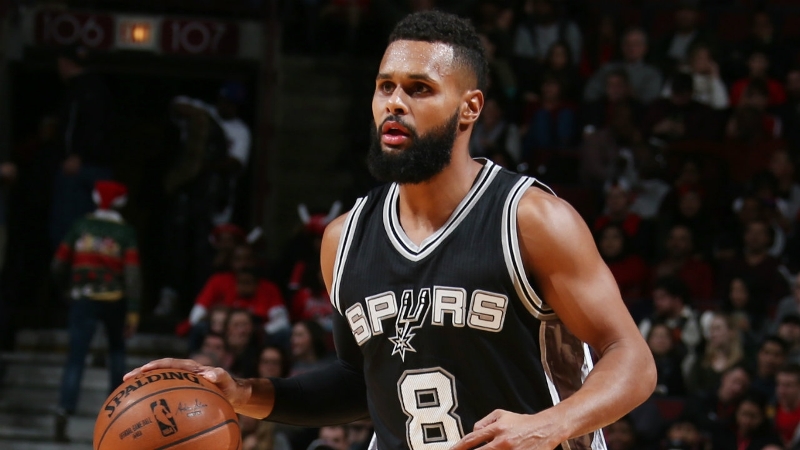 Nobody will confuse Patty Mills with Tony Parker. That said, Mills has been a vital contributor to the San Antonio Spurs backcourt for many seasons. Mills’ success with the perennial title contenders has also raised awareness about indigenous cultures in Australia. Mills has been gainfully employed in the NBA since 2009, first with the Portland Trail Blazers. With the Spurs, he’s worked under legendary bench boss Gregg Popovich since 2011, providing a huge spark off the bench. Exhibit A: he contributed 10.2 points in the regular season on the title-winning 2013-14 squad. This summer, he signed a new four-year contract with the Spurs. That $50 million deal is a nice reminder of his place in the Australia & Oceania sports orbit. Moreover, Mills showed what he can do as a showcased scorer for Australia at the 2012 London Olympic squad, providing 21.2 ppg. No chump change regardless of the competition.
Nobody will confuse Patty Mills with Tony Parker. That said, Mills has been a vital contributor to the San Antonio Spurs backcourt for many seasons. Mills’ success with the perennial title contenders has also raised awareness about indigenous cultures in Australia. Mills has been gainfully employed in the NBA since 2009, first with the Portland Trail Blazers. With the Spurs, he’s worked under legendary bench boss Gregg Popovich since 2011, providing a huge spark off the bench. Exhibit A: he contributed 10.2 points in the regular season on the title-winning 2013-14 squad. This summer, he signed a new four-year contract with the Spurs. That $50 million deal is a nice reminder of his place in the Australia & Oceania sports orbit. Moreover, Mills showed what he can do as a showcased scorer for Australia at the 2012 London Olympic squad, providing 21.2 ppg. No chump change regardless of the competition.
2. Andrew Bogut
The No. 1 pick in the 2005 NBA Draft (Milwaukee Bucks) has had an injury-plagued career, but being a top selection will always be a historical footnote for Australia & Oceania. Later in his career, Bogut won a title with the Golden State Warriors in the 2014-15 season. He played on the next year’s club that went 73-10. The Australian big man with Croatian roots led the NBA in blocked shots with 2.5 per game for the 2010-11 campaign. Bogut suffered a season-ending injury broken leg with the Cleveland Cavaliers in 2017 and was released. In September 2017, Bogut agreed to a one-year $2.3 million deal to play for the Los Angeles Lakers. Despite his many injuries, Bogut’s longevity in the league rekindles memories of fellow Aussie Luc Longley. The lumbering big man was the first Australian to play in the NBA in a 10-year career that began in ’91. Longley was the starting center on Chicago’s back-to-back-to-back Championship clubs during the glorious second act of the Michael Jordan-Jackson era.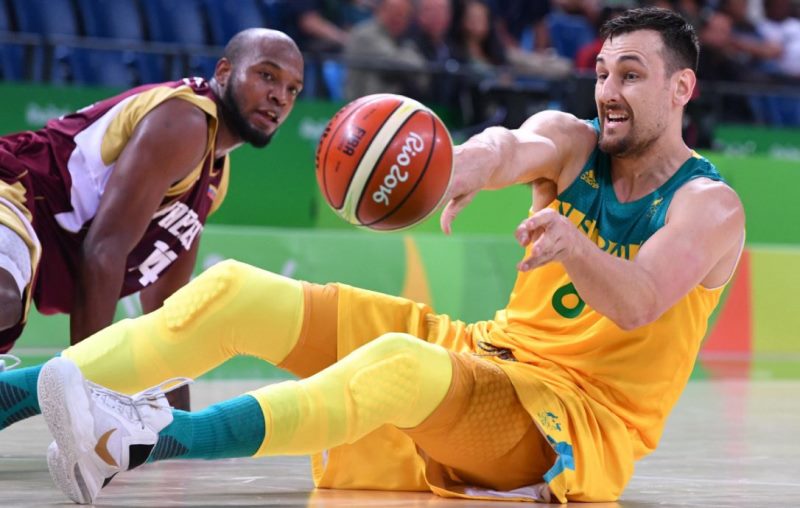
1.Yao Ming
No conversation about influential basketball players from Asia & Oceania would be complete — or legitimate — without mentioning Yao Ming. In fact, The Naismith Memorial Basketball Hall of Fame center is the undisputed No. 1 figure in Asian basketball across the decades. And it’s not just because the Shanghai native was selected No. 1 overall in the 2002 NBA Draft. That was a dramatic result of basketball globalization, though. An eight-time All-Star, Yao Ming retired in 2011. It was an injury-plagued career. His rock-solid career stats (19.0 points, 9.2 rebounds, and 1.9 blocks) in 486 regular-season games with the Rockets proved that Chinese athletes could make a big impact in the NBA. With the Rockets, Yao Ming was a likable teammate with a self-deprecating sense of humor. He was also respected for his strong all-around fundamentals, hard-working demeanor, and mental toughness. But more than that, the former Shanghai Sharks star’s jump to Houston transformed him into a larger-than-life figure. And it wasn’t just because of Yao Ming’s height (7’6 or 229 cm). He was everywhere on both sides of the Pacific Ocean in commercials and mass media. Billions of eyes witnessed what he was doing. (Reminder: China has about 1/6th of the world’s population, and everyone knows Yao Ming). He took it in stride with a wink and a smile. “Everybody loves him. He gets attention, obviously, for the way he plays, but people also really like his personality,” Former Rockets GM Carroll Dawson once said.
In the everything-is-shareable/available-for-manipulation digital age, the Yao Ming Face became an iconic meme, the Yao Ming Meme. OK, a little background. 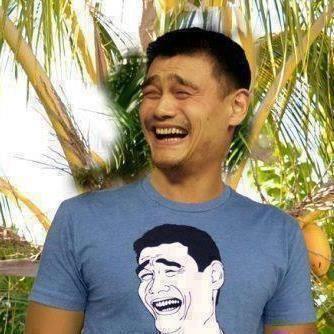 After a May 2009 playoff game against the Portland Trail Blazers, the Rockets’ Ron Artest bolted during a news conference with Yao Ming sitting beside him. Yao’s reaction? A big, flashy smile. In July 2010, an artist posted a screen image of Yao Ming from that news conference and the Yao Ming Meme on Reddit, which caused the iconic player’s caricature image to travel at warp speed through online forums and social media.
After a May 2009 playoff game against the Portland Trail Blazers, the Rockets’ Ron Artest bolted during a news conference with Yao Ming sitting beside him. Yao’s reaction? A big, flashy smile. In July 2010, an artist posted a screen image of Yao Ming from that news conference and the Yao Ming Meme on Reddit, which caused the iconic player’s caricature image to travel at warp speed through online forums and social media.
Before the Yao Ming Meme entered the pop culture vernacular, Yao Ming’s time in the NBA triggered a massive rise in popularity — TV and online viewership and participation among Chinese players. That trend continues to this day thanks to one of the best basketball players of the 21st century. FIBA awarding the 2019 Basketball World Cup to China is directly linked to the positive impact Yao’s career has had on Chinese basketball.
In October 2008, only two months after Yao served as the flag bearer during the Opening Ceremony of the Beijing Summer Olympics, the NBA and partner AEG would team up to build 12 new basketball arenas, The New York Times reported. This is only a part of the Hall of Famer’s significance, but a reminder of his lasting legacy throughout China. This year, Yao Ming became the president of the Chinese Basketball Association. The job will extend his sphere of influence for years to come.
Conclusion
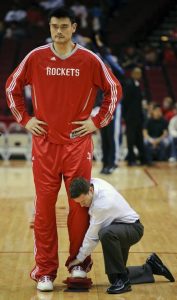 Every region of the world has developed basketball at a different pace. Yao Ming was the first Asian basketball superstar. His talents, hoop IQ, size, strength, and larger-than-life personality made it happen. Before and after Yao Ming, other prominent basketball players from Asia & Oceania have experienced popularity and success. But none quite like him. Yao Ming is the biggest (and most important) of the best basketball players from Asia & Oceania. Best basketball players such as Loyzaga, Gaze, Mills, Bogut, El-Khatib, Haddadi, Adams, Bhamara, and Tabuse. All have made huge contributions as the sport has gotten bigger and more popular decade after decade.
Every region of the world has developed basketball at a different pace. Yao Ming was the first Asian basketball superstar. His talents, hoop IQ, size, strength, and larger-than-life personality made it happen. Before and after Yao Ming, other prominent basketball players from Asia & Oceania have experienced popularity and success. But none quite like him. Yao Ming is the biggest (and most important) of the best basketball players from Asia & Oceania. Best basketball players such as Loyzaga, Gaze, Mills, Bogut, El-Khatib, Haddadi, Adams, Bhamara, and Tabuse. All have made huge contributions as the sport has gotten bigger and more popular decade after decade.
2 Comments
Leave a Comment
You must be logged in to post a comment.

Nice work Ed.
[…] https://latestbasketballnews.com/best-basketball-players-asia-oceania/ […]